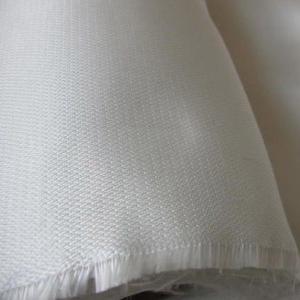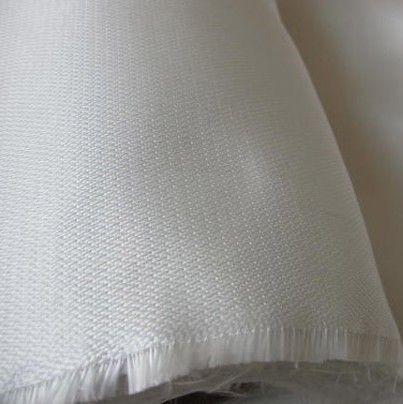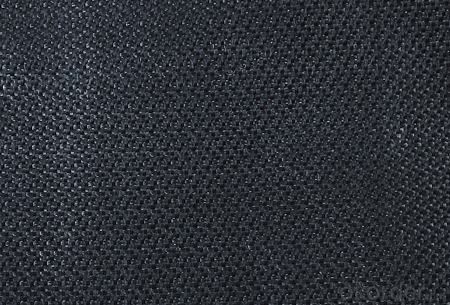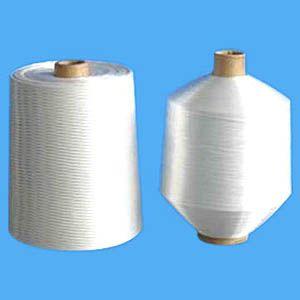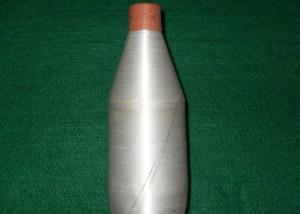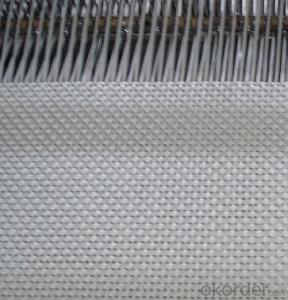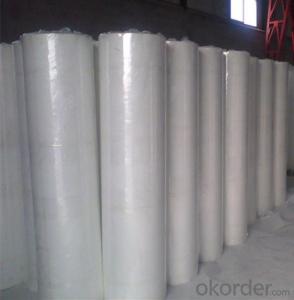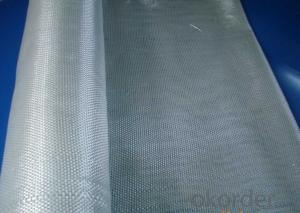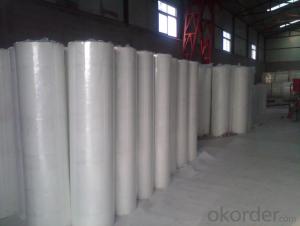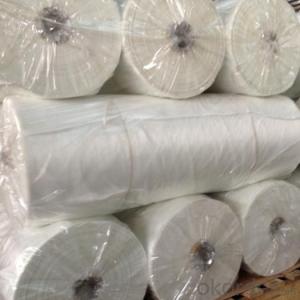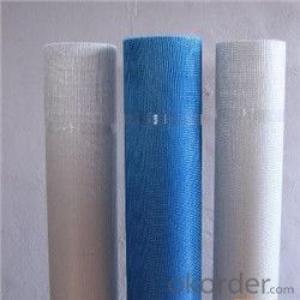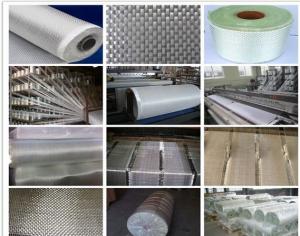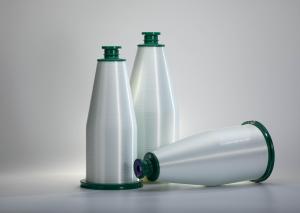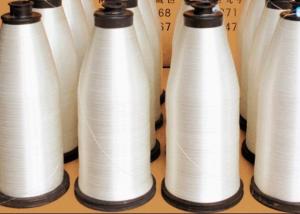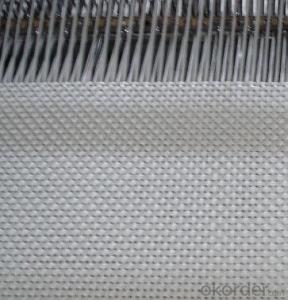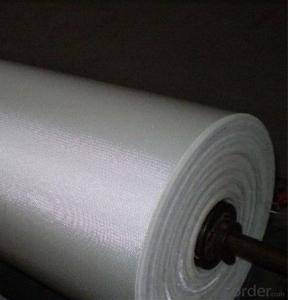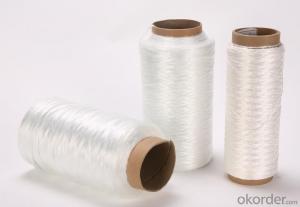Fiberglass Yarn Reinforced Fiberglass Fabric for Construction Use CNBM
- Loading Port:
- Shanghai
- Payment Terms:
- TT OR LC
- Min Order Qty:
- 500 m²
- Supply Capability:
- 50000 m²/month
OKorder Service Pledge
OKorder Financial Service
You Might Also Like
Fiberglass Fabric for Construction Use CNBM
Fiberglass Fabric Introduction:
Fiberglass fabric is weaved by high quality fiberglass,as a kind of engineering material,which is
many excellent characteristics:
flame-resisting,corrosion resistant,high strength,heat resistance.stable structure,good chemical resistance,durability.
Fiberglass Fabric Features:
Warp and weft yarns are parallel arrangement as flat situation, with uniform tension;
Fiber is aligned with large consistency, stable and easy operation;
Good moldability, fast and complete wet out in resins, resulting in high productivity;
Good transparency and high strength of composite products.
Fiberglass Fabric Specification:
mark | Fiber consistency(ends/ cm) |
Area weight (g/ m2) |
Thick-ness (mm) |
Width (cm) |
Length (mm) | Breaking strength(N)≥ |
weave | |||
Warp direction | Weft direction | Warp direction | Weft direction | |||||||
EW200 | 16 | 12 | 200±20 | 0.2 | 90-130 | 300-1200 | 980 | 980 | ||
EW210 | 16 | 12 | 200±20 | 0.21 | 90-130 | 300-1200 | 1080 | 1080 | Twill weave | |
Plain weave | ||||||||||
EWR360 | 3.2 | 1.8 | 354±18 | 0.35 | 50-300 | 100 | 2000 | 2000 | ||
EW280 | 16 | 10 | 280±28 | 0.26 | 90-130 | 300-1200 | 1800 | 1800 | ||
EW300 | 14 | 10 | 320±32 | 0.3 | 90-130 | 300-1200 | 1500 | 1500 | ||
EW430 | 20 | 12 | 420±42 | 0.43 | 90-130 | 300-1200 | 2000 | 2000 | Broken twill | |
EWR136 | 10 | 10 | 136±13 | 0.136 | 100 | 200 | 850 | 850 |
Plain weave | |
EWR200 | 8 | 7 | 200±20 | 0.21 | 100 | 200 | 1200 | 1200 | ||
EWR400 | 3.6 | 3.2 | 400±30 | 0.4 | 100 | 50-100 | 2500 | 2500 | ||
EWR600 | 2.6 | 2.5 | 600±50 | 0.6 | 100 | 40KG | 4000 | 4000 | ||
EWR580 | 2.5 | 2.3 | 576±29 | 0.58 | 100 | 40KG | 3850 | 3850 | ||
EWR800 | 1.8 | 1.8 | 800±60 | 0.8 | 100 | 40KG | 4600 | 4600 | ||
Product Show
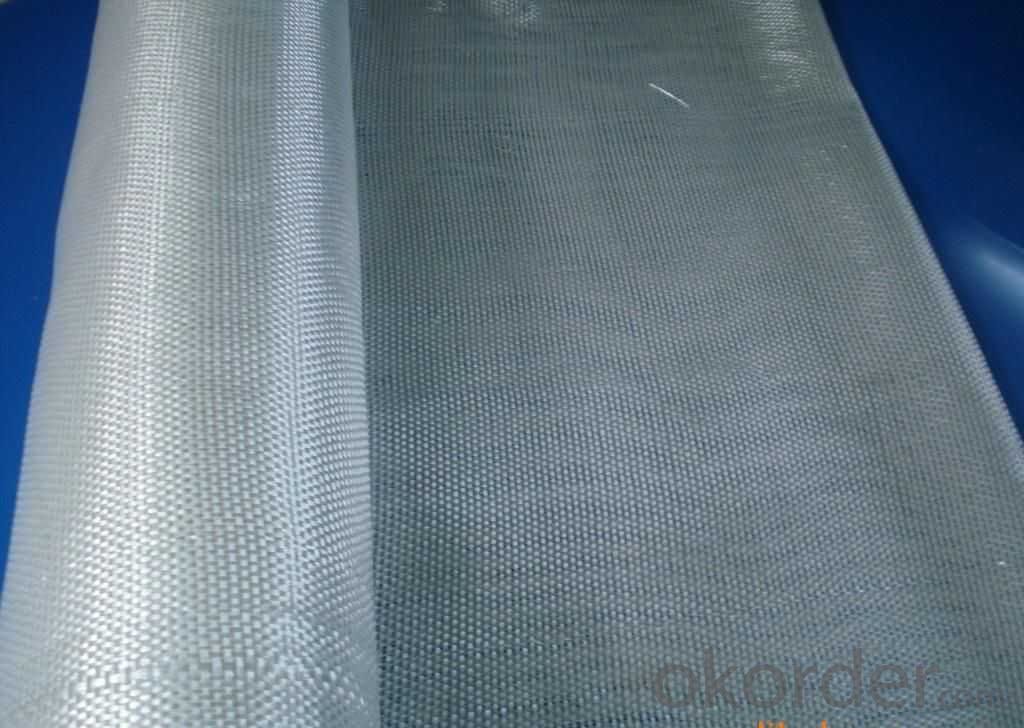
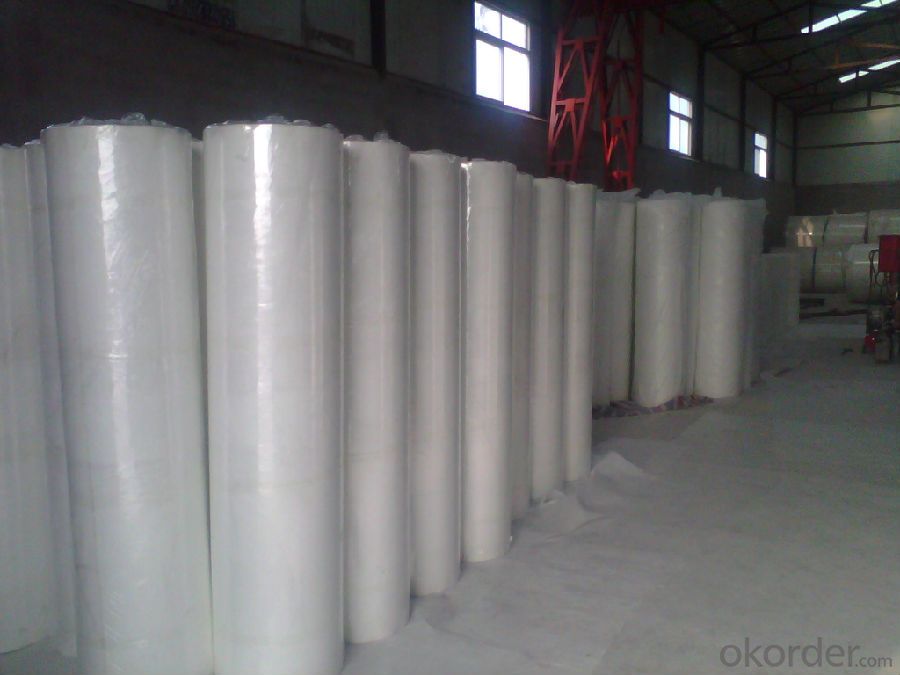
Fiberglass Fabric Usage:
E-glass woven roving is a schistose double faces reinforcement fabric that is weaved into from roving in directly.
E-glass fiber fabric (thin fabrics with thickness from 0.025 to 0.09mm) is suitable for electrical isolation mica product, wax cloth as the reinforcement materials.
E-glass woven roving applys to all kinds of polyester reinforcement system, (such as unsaturated polyester resin, vinylite,epoxy resin and phenolic resin.
E-glass woven roving is a high performance reinforcement material. It is widely used in hand lay-up and machinery processing products, (such as vessel, container, airplane and vehicle component, furniture, athletic facilities and other industry.
FAQ
1.Package of Fiberglass Fabric?
Fiberglass fabric is wound on a paper tube with inner diameters of 50. 8, 76 or 152mm. Each roll is wrapped in a plastic bag, then to be packed in a carton box. The rolls are to be horizontally placed.
Width (cm): 90, 100, 127
Length (m): 100, 200, 300, 400
2.Storage of Fiberglass Fabric?
Store rolls in a cool, dry location
Protect rolls from weather and other damage.
3.If sample available if needed?
We aim to offer our customer best Products&Service,samples are allowed if necessary.
- Q: Is fiberglass yarn suitable for use in aerospace composites?
- Yes, fiberglass yarn is suitable for use in aerospace composites. Fiberglass is a commonly used material in the aerospace industry due to its high strength-to-weight ratio, corrosion resistance, and excellent thermal insulation properties. Fiberglass yarn can be woven into fabric or used as reinforcement material in composite structures, providing strength and stiffness to the aerospace components. It is also known for its excellent electrical insulation properties, making it suitable for applications in electrical systems and wiring harnesses. Additionally, fiberglass composites are relatively cost-effective compared to other materials like carbon fiber, making them a popular choice in the aerospace industry. Overall, fiberglass yarn is a suitable material for use in aerospace composites, meeting the demanding requirements of strength, weight, and performance in aerospace applications.
- Q: How does fiberglass yarn perform in terms of thermal stability?
- Known for its excellent thermal stability, fiberglass yarn possesses a high melting point and can endure high temperatures without degradation or compromising its structural integrity. This quality renders it suitable for a wide range of applications where thermal stability is of utmost importance, such as insulation materials, protective clothing, and high-temperature filters. The inherent heat resistance of fiberglass yarn enables it to maintain its strength and performance even under extreme heat conditions, making it an optimal choice for industries operating in high-temperature environments. Additionally, fiberglass yarn exhibits fire resistance and does not emit toxic gases when exposed to flames, thereby enhancing its safety characteristics. In conclusion, fiberglass yarn offers remarkable thermal stability, establishing itself as a dependable and long-lasting material in industries requiring heat and fire resistance.
- Q: How does the flexibility of fiberglass yarn affect its handling?
- The flexibility of fiberglass yarn greatly affects its handling in several ways. Firstly, the flexibility of the yarn allows it to be easily manipulated and woven into various shapes and patterns. This makes it highly versatile and suitable for a wide range of applications, including textiles, composites, and insulation. Furthermore, the flexibility of fiberglass yarn also affects its ease of handling during manufacturing processes. The yarn's flexibility enables it to be easily spun, twisted, and braided, allowing for the creation of different types of fiberglass products. This makes it easier for manufacturers to work with the yarn and incorporate it into their production processes. Moreover, the flexibility of fiberglass yarn also impacts its overall strength and durability. The yarn's ability to bend and flex without breaking allows it to withstand external forces and stress, making it highly resistant to damage. This makes fiberglass yarn an ideal choice for applications that require high strength and durability, such as reinforcement in composites and construction materials. In summary, the flexibility of fiberglass yarn greatly influences its handling. It allows for easy manipulation and weaving, facilitates manufacturing processes, and contributes to the overall strength and durability of fiberglass products.
- Q: Can fiberglass yarn be used for upholstery?
- Yes, fiberglass yarn can be used for upholstery. It is known for its durability, strength, and resistance to moisture, making it suitable for upholstering furniture that requires a sturdy and long-lasting material. Additionally, fiberglass yarn can be used to create a variety of textures and designs, allowing for versatile and creative upholstery options.
- Q: Can fiberglass yarn be used for upholstery?
- Yes, fiberglass yarn can be used for upholstery. Fiberglass yarn is known for its durability, strength, and resistance to heat and chemicals, making it a suitable choice for upholstery applications. It can be used to create fabrics that are fire-resistant, stain-resistant, and easy to clean. Additionally, fiberglass yarn can be blended with other materials such as cotton or polyester to enhance its comfort and softness, making it a versatile option for upholstery projects.
- Q: Is fiberglass yarn resistant to mechanical damage?
- Yes, fiberglass yarn is generally resistant to mechanical damage. It has high tensile strength and excellent dimensional stability, making it highly durable and resistant to tearing or breaking under mechanical stress.
- Q: Can fiberglass yarn be used for making swimwear?
- Yes, fiberglass yarn can be used for making swimwear. Fiberglass is a strong and durable material that is resistant to water and chemicals. It can provide excellent support and shape retention, making it ideal for swimwear. Additionally, fiberglass yarn is lightweight and has a smooth surface, providing a comfortable and sleek fit. However, it is important to note that fiberglass can be irritating to the skin, so proper lining or coating may be necessary to ensure comfort and safety.
- Q: Can fiberglass yarn be used for pipe insulation?
- Certainly! Pipe insulation can indeed utilize fiberglass yarn. This versatile material finds widespread use in a multitude of applications, including insulation. Its outstanding thermal insulation properties render it a perfect option for pipe insulation. With the ability to endure high temperatures, fiberglass yarn efficiently prevents heat loss or gain in pipes, thus enhancing energy efficiency. Moreover, it boasts non-combustible traits, moisture resistance, and remarkable acoustic insulation properties, rendering it suitable for both residential and industrial pipe insulation requirements.
- Q: Can fiberglass yarn be used in geotextiles?
- Indeed, geotextiles can utilize fiberglass yarn for their construction. Renowned for its robustness, endurance, and ability to withstand chemicals and abrasion, fiberglass yarn proves to be an appropriate material choice for geotextiles. Geotextiles find application in diverse civil engineering projects, including erosion management, soil stabilization, and drainage systems. By incorporating fiberglass yarn, geotextiles not only reinforce, filter, and separate materials but also guarantee the durability and efficacy of these specific applications.
- Q: How does fiberglass yarn affect the appearance of a product?
- Fiberglass yarn can have a significant impact on the appearance of a product. Firstly, fiberglass yarn is known for its high strength and durability, which can enhance the overall appearance of a product by providing a clean and polished finish. Its ability to be woven into various patterns and textures also allows for the creation of visually appealing designs, adding aesthetic value to the final product. Furthermore, fiberglass yarn can be easily dyed or coated, allowing manufacturers to achieve a wide range of colors and finishes. This versatility enables the creation of products that are visually appealing and customizable to suit different preferences or brand identities. Whether it is used in textiles, composites, or other applications, fiberglass yarn can contribute to a product's overall attractiveness and make it stand out from competitors. Additionally, fiberglass yarn's inherent properties such as its resistance to chemicals, moisture, and UV rays, can also influence the appearance of a product over time. These qualities ensure that the product maintains its original appearance for a longer period, reducing the chances of fading, discoloration, or degradation. This durability can be particularly beneficial in outdoor or high-traffic environments where maintaining a visually appealing product is crucial. In summary, fiberglass yarn can positively impact the appearance of a product through its strength, versatility in design, and ability to withstand environmental factors. Its inclusion can enhance the overall aesthetic appeal, durability, and longevity of a product, making it a valuable choice for manufacturers seeking to create visually appealing and long-lasting products.
Send your message to us
Fiberglass Yarn Reinforced Fiberglass Fabric for Construction Use CNBM
- Loading Port:
- Shanghai
- Payment Terms:
- TT OR LC
- Min Order Qty:
- 500 m²
- Supply Capability:
- 50000 m²/month
OKorder Service Pledge
OKorder Financial Service
Similar products
Hot products
Hot Searches
